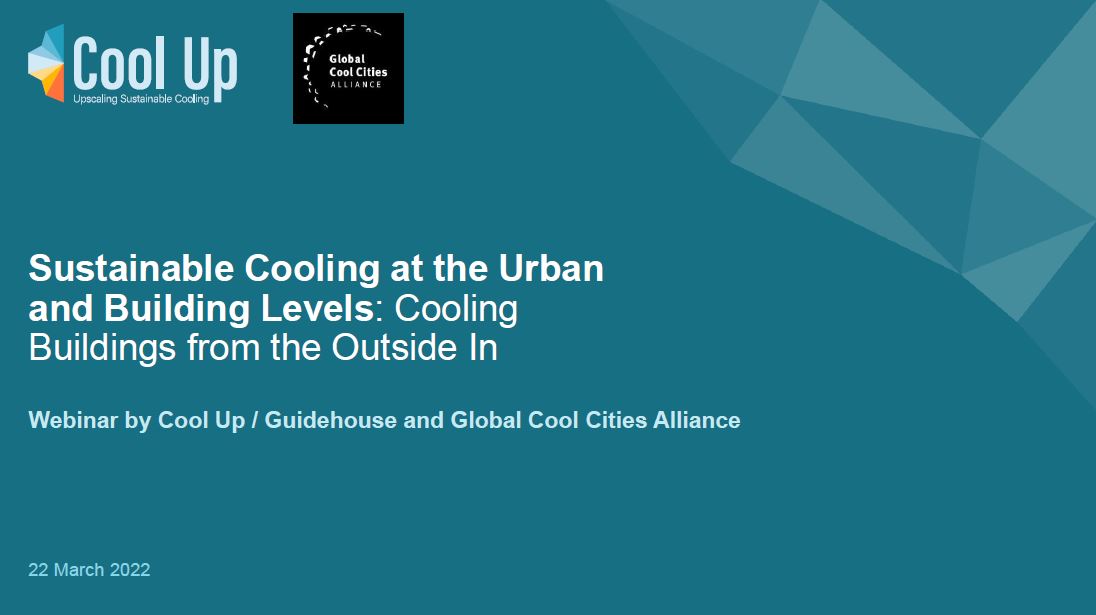22.03.2022, Virtual
Joint webinar with the Global Cool Cities Alliance
Cool Up and the Global Cool Cities Alliance hosted a webinar on 22 March entitled Sustainable Cooling at the Urban and Building Levels: Cooling Buildings from the Outside In. In this webinar, the Cool Up programme and Global Cool Cities Alliance (GCCA) discussed how cool surfaces at the urban level can work together with other sustainable cooling measures at the building level to achieve climate-friendly cooling. We looked at solutions that can be scaled up in the MENA region and across the globe. The event took place at 12:00CET/13:00EET/14:00TRT and was open to the public.
Date: Tuesday, 22 March 2022
Time: 12:00CET/13:00EET/14:00TRT
Air conditioning is both a driver and a consequence of global warming. Fortunately, climate change adaptation and mitigation solutions exist on both the urban and building levels to tackle the need for cooling. Cool roofs and pavements can help reduce the effects of urban heat islands by increasing the reflectivity of roads and buildings. This can reduce demand for air conditioning by up to 20%, which is particularly important for the Middle East and North Africa (MENA) region. In these countries such measures go a long way towards safeguarding well-being and contributing to affordable and sustainable cooling. When combined with other sustainable cooling measures like energy efficiency and natural refrigerants, cool surfaces can be effective tools in the sustainable cooling toolbox.
In this webinar, the Cool Up programme and GCCA discussed how cool surfaces at the urban level can work together with other sustainable cooling measures at the building level to provide cooling that’s good for people and the planet. We looked at solutions that can be scaled up in the MENA region and across the globe.
Agenda
- Introduction | Dr. Nesen Surmeli-Anac, Guidehouse
- Urban level cooling | Maria Koetter, GCCA
- Buildings level cooling | Dr. Andreas Hermelink, Guidehouse
- Question & answers
Moderator: Kristen Brand, Guidehouse
About Global Cool Cities Alliance
Global Cool Cities Alliance (GCCA) launched in 2010 to accelerate a world-wide transition to cooler, healthier cities. Its mission is to advance heat mitigation policies and programmes that promote efficient and comfortable buildings, healthy and resilient cities, and mitigate the warming effects of climate change. GCCA supports strategies that increase the solar reflectance of urban surfaces such as roofs, walls, and roads as a cost-effective way to achieve significant cooling results.
The GCCA approach is to cultivate partnerships with cities and other stakeholders to give them the tools and support they need to identify successful policies and programmes, adapt them for each city’s unique characteristics, and connect with experts and partners to help with implementation. We work with companies and governments to help grow new markets for technologies and materials. We also link the diverse world of experts and researchers who study urban heat islands and cool materials.

